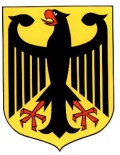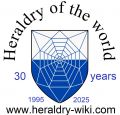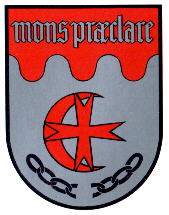Ruppichteroth: Difference between revisions
Jump to navigation
Jump to search
Knorrepoes (talk | contribs) m (Text replacement - "/Arms of " to "/Arms (crest) of ") |
Knorrepoes (talk | contribs) m (Text replacement - "{{media}}" to " {{de1}} {{media1}}") |
||
| Line 26: | Line 26: | ||
This story is shown as the Islamic crescent and Christian cross (shown as the cross of the Knights of Malta), the broken chains for his freedom and the latinized exclamation. | This story is shown as the Islamic crescent and Christian cross (shown as the cross of the Knights of Malta), the broken chains for his freedom and the latinized exclamation. | ||
{{ | |||
{{de1}} | |||
{{media1}} | |||
[[Civic Heraldry Literature - Germany|'''Literature''']]: Nagel, R. Rheinisches Wappenbuch, 1986. | [[Civic Heraldry Literature - Germany|'''Literature''']]: Nagel, R. Rheinisches Wappenbuch, 1986. | ||
Revision as of 10:58, 26 December 2022
This page is part of the German heraldry portal Deutsche Wappensammlung |
Heraldry of the World |
|
German heraldry:
|
Selected collector's items from Germany:
|
RUPPICHTEROTH
State : Nordrhein-Westfalen
District (Kreis) : Rhein-Sieg Kreis
Additions : 1969 Winterscheid
| German | |
| English | No blazon/translation known. Please click here to send your (heraldic !) blazon or translation |
Origin/meaning
The arms were granted on November 2, 1970.
The arms were officially granted to the Amt Ruppichteroth in 1949 and are based on a local legend. The local knight Dietrich of Bruell is said to have joined Emperor Friedrich I on a crusade. He was imprisoned, but freed. When he finally returned he exclaimed that the mountains were so beautiful.
This story is shown as the Islamic crescent and Christian cross (shown as the cross of the Knights of Malta), the broken chains for his freedom and the latinized exclamation.
Literature: Nagel, R. Rheinisches Wappenbuch, 1986.


